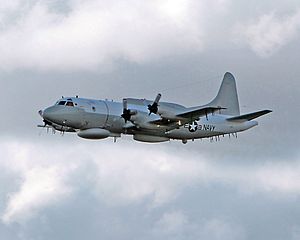On Monday, U.S. officials said that two Chinese People’s Liberation Army Air Force (PLAAF) Chengdu J-10 fighters conducted an intercept of a U.S. Navy EP-3 Aries surveillance aircraft in international airspace over the East China Sea over the weekend.
One of the two Chinese jets came within 300 feet of the EP-3, U.S. officials said, according to Reuters. The proximity of one of the Chinese fighters forced the EP-3 to change course in mid-air.
U.S. officials are describing the incident as an unsafe intercept, but Reuters notes that the “vast majority of interactions were safe.”
The incident occurred about 80 nautical miles off China’s mainland. In 2013, China declared an air defense identification zone (ADIZ) over a large portion of the East China Sea.
The incident is the third of its kind this year. In May, two PLAAF Su-30 fighters intercepted a U.S. Air Force Boeing WC-135 Constant Phoenix aircraft over the East China Sea.
In February, days before U.S. President Donald J. Trump spoke to Chinese President Xi Jinping for the first time in his official capacity as president, a U.S. Navy P-3C Orion surveillance aircraft and a Chinese military surveillance aircraft came within 1,000 feet of each other over the skies of the South China Sea, near Scarborough Shoal.
Only two similar incidents were recorded in 2016. In June 2016, a U.S. Boeing RC-135 was intercepted by a Chengdu J-10 fighter within 100 feet over the East China Sea.
In May 2016, a U.S. Navy EP-3 was intercepted by two PLAAF Shenyang J-11 fighters over the South China Sea, with one Chinese fighter coming within 50 feet of the aircraft.
In September 2015, a Chinese fighter performed what U.S. officials described as an “unsafe” maneuver in front of a U.S. RC-135 surveillance aircraft over the Yellow Sea.
That same month, Xi and former U.S. President Barack Obama signed an agreement to govern air-to-air encounters between the two countries’ military aircraft after earlier incidents in 2014.
The most serious bilateral incident stemming from an air-to-air encounter came in 2001, when a U.S. EP-3 collided with a People’s Liberation Army Navy (PLAN) J-8IIM fighter, killing the Chinese pilot and forcing the EP-3 to land on Hainan Island.
China opposes U.S. surveillance flights in international airspace near its territorial airspace. It also opposes U.S. naval operations within its exclusive economic zone (EEZ), which are permitted under the United Nations Convention on the Law of the Sea.
The weekend’s intercept over the East China Sea comes shortly after the PLAN dispatched at least two auxiliary general intelligence (AGI) vessels to waters off Alaska and Queensland to surveil a U.S. ballistic missile defense system test and ongoing bilateral exercises between the United States and Australia, respectively.

































